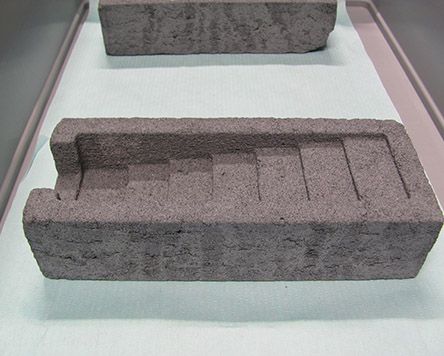Quick introduction: Foundry

Many technical applications require complex large-format castings with specific material properties. Such products require precise control of the manufacturing process in order to gain competitive advantages in terms of costs and to achieve qualitative improvements. In the casting process, the molds can make a significant contribution due to their geometric shape and their material composition. They determine the interactions between metal melt and mold, the cooling process of the casting body and the design of the working process during casting. In addition to the material composition, cooling also defines the material structure that is formed and thus the properties of the products. A knowledge-based combination of mold design and choice of mold material is therefore the key to improved cast products and to reducing production costs for high-quality foundry products.
In cooperation with the mold manufacturer Direkt Form, Fraunhofer IKTS has produced a new mold material based on silicon carbide and a newly developed clay binder. Compared to commercial molding materials, the silicon carbide molding material bonded in this way has significantly improved thermal conductivity. This makes it possible to control the dissipation of heat from the casting over a wide range, enabling the setting of tailor-made microstructures in the casting. In addition, it was shown that different cooling rates of a casting due to different wall thicknesses can be compensated by the targeted use of molding materials. In combination with individual shaping in the production of the casting mold, it is thus possible to create or avoid component-specific and locally varying properties such as hardness, strength, modulus of elasticity or corrosion stability in the cast product. With the same casting alloy and a uniform metallurgical process, cast products with locally different properties can be produced or geometrically complex cast products with homogeneous properties can be obtained.